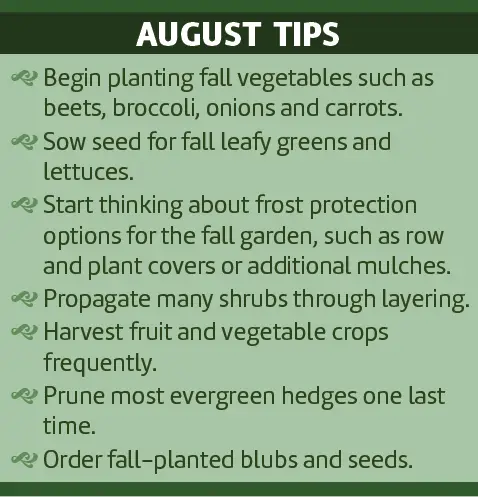It’s still mighty hot here in Alabama but that doesn’t mean you can’t start picking out a nice winter layer for your garden.
I know, it’s hard to think about adding layers when you’re still shedding as many as you can, but fall will be here in no time with winter fast on its heels, which is why it’s smart to start searching now for your garden’s best winter “garb.” And an exceptional choice is a lush green blanket of soil-building cover crops.
Cover crops are annual living mulches typically planted in the offseason when garden beds are fallow, though they can also be planted between rows or in fallow beds during the growing season. Either way, these “green manure” crops offer an array of benefits to garden soils.
As they grow, cover crops can help hold bare soil in place, reduce nutrient runoff, add nutrients to the soil, crowd or shade out weeds, conserve soil moisture, break up compacted soils and improve water filtration. They also make garden areas look more attractive and, depending on the cover crop used, can provide food and habitat for pollinators and other beneficial animals and soil organisms. After their demise, cover crops continue to benefit the soil by forming a natural winter/early spring mulch and, as they decompose and are incorporated into the soil, they help increase soil organic matter and return some of their own nutrients to the Earth.
Cover crop options for the home garden
Cover crop species are usually divided into three categories, each of which provides different benefits or can be mixed and matched to combine benefits. Below are a few examples of species that work well in the Southeast.
- Grains and Grasses – annual grasses (rye and Sudan), winter rye, oats and wheat
- Legumes – clovers, vetch, cowpea, winter pea, lupin and soybeans
- Broadleaves and Brassicas – mustard, turnip, radish, kale, canola and buckwheat

All this happens with very little work on your part — once established, most cover crops require no additional fertilizer and little irrigation. You do, however, need to be discriminating in your choice of cover crop species and there are many to choose among (see a partial list in the sidebar). To make the choice easier, start with a soil test, which will help determine what additional nutrients are needed for next year’s crops, then find a single species or a mixture of two cover crop species that will meet those needs while boosting soil quality.
One caveat: Some cover crop species can be incompatible with future cropping plans! For example, planting a legume cover crop in an area where you plan to grow a legume vegetable crop can increase certain diseases and reduce beneficial soil bacteria that help fix nitrogen in the soil.
When it comes to choosing a cover crop species, keep in mind that each species has its own distinctive planting, maintenance and termination needs and cycle. For instance, cool-season species, which are used as winter cover crops, are typically planted in the fall or early winter while warm-season species, which are used as spring and summer cover crops, are usually planted in late winter and early spring. Some species die off naturally, others may need to be manually cut down at the end of the season.

In other words, it pays to research the options before settling on your cover crop choices. So, take some time this month — somewhere cool so you can think about winter more easily — and peruse the options before buying seed. When you’re ready to buy, seed is available through most mail order catalogues and through neighborhood garden and farm centers, the staff of which are likely to be well-versed in which crops work best in your area.
And now is also a great time to learn more about cover crops in general, including how to prepare garden beds for cover crop seeding, incorporate cover crop residue into garden soil and rotate cover crop choices each year. Help is available through county or regional Alabama Cooperative Extension and Master Gardener experts, local seed and garden outlets and online. Here are a few websites that may be useful, too:
- Sare.org, then click on “building soils for better crops” and scroll to chapter 10
- Southerncovercrops.org, then click on either row crops, vegetable or grazing and click on Alabama
- Blog.southernexposure.com, then type “cover crops” in the search field
- BigBlogofGardening.com, then type “cover crops” in the search field
Katie Jackson is a freelance writer and editor based in Opelika, Alabama. Contact her at [email protected].




